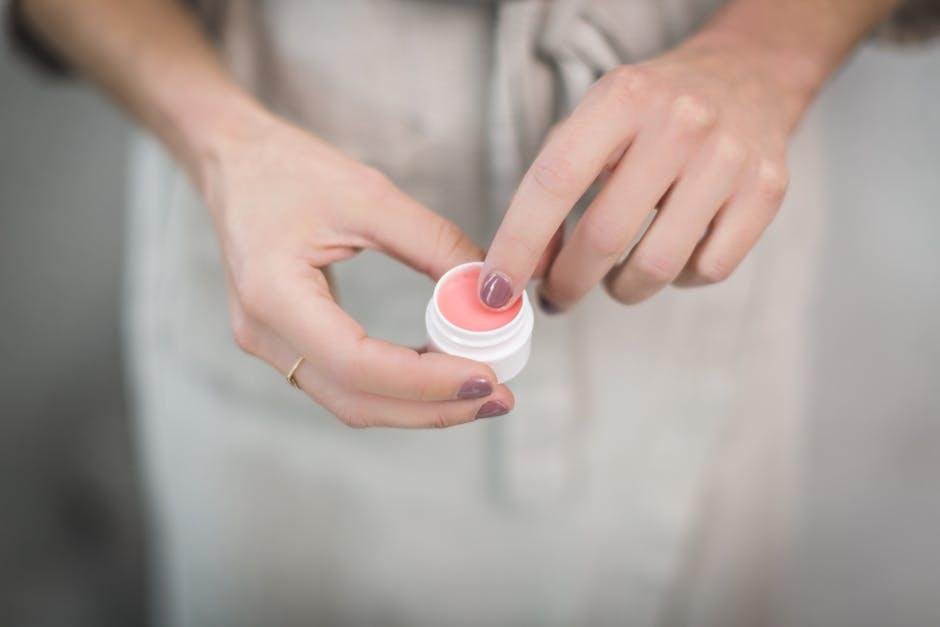In the ever-evolving world of beauty and skincare, the quest for perfectly soft, hydrated lips often leads us down a labyrinth of options. Among the myriad products that promise to nourish and protect our prized pout, two contenders frequently emerge: lip balm and lip oil. While both claim to deliver hydration and comfort, they each offer unique formulations, textures, and benefits. Understanding the basic differences between lip balm and lip oil not only helps us make an informed choice but also empowers us to tailor our lip care routines to our individual needs. Join us as we delve into the intricacies of thes two popular products—unraveling their ingredients,uses,and ideal situations—so you can discover which one deserves a spot in your beauty arsenal.
Understanding the Formulations: Exploring Ingredients and Benefits
When it comes to choosing between lip balm and lip oil, it’s essential to delve into their ingredients to understand their distinct benefits. Lip balms typically contain a blend of occlusive agents like beeswax or petrolatum, which form a protective barrier on the lips, locking in moisture and preventing dehydration.Additionally, many lip balms are infused with nourishing ingredients such as sheabutter or coconut oil, which provide a soothing sensation and can help repair cracked or chapped lips. These formulations are often thicker in consistency, allowing for lasting hydration throughout the day.
In contrast, lip oils are known for their lightweight feel and oil-based compositions, often featuring ingredients like jojoba oil, argan oil, or almond oil. These components not only impart a subtle shine but also deliver intense hydration directly to the lips.The absorption of these natural oils allows for a more frequent application, making them ideal for those seeking a non-greasy and more fluid solution for dry lips. Below is a comparison table highlighting key features of each product:
| Feature | Lip Balm | Lip Oil |
|---|---|---|
| Consistency | Thicker | Lightweight |
| Moisture Lock | Yes | No |
| Best For | Chapped lips | Hydration |
| Application frequency | Less frequent | Frequent |

Texture and Application: How Each Product Feels and Performs
When it comes to texture, lip balms typically boast a thicker, creamier consistency. This richness creates a protective barrier on the lips, ensuring instant hydration and a long-lasting shield against environmental elements. Many balms are formulated with nourishing ingredients like shea butter or beeswax, which contribute to their substantial feel. Users often describe the sensation as comforting, making it a go-to during colder months or dry climates. With a subtle sheen, they tend to leave the lips looking smooth and velvety without a high-gloss finish.
In contrast, lip oils offer a lighter, almost liquid texture that glides over the lips effortlessly. Their formulation usually includes a blend of botanical oils, providing a more fluid and less occlusive application. The result is a dewy, high-shine look that many find appealing. As lip oils absorb quickly, they can feel less heavy compared to balms, making them suitable for layering or a swift refresh throughout the day. However, keep in mind that because of their lightweight nature, lip oils may require more frequent reapplication to maintain hydration and sheen.
Hydration vs. Nourishment: What Your Lips Really Need
When it comes to nurturing your lips, understanding the difference between hydration and nourishment is key. Lip balms primarily act as a protective barrier, sealing in moisture and preventing your lips from drying out. They frequently enough contain ingredients such as beeswax, petroleum jelly, and various emollients. Here are some common benefits of using lip balm:
- Locks in moisture: Helps maintain hydration levels.
- Protective barrier: Shields lips from environmental stressors.
- Quick relief: Provides immediate comfort for chapped lips.
on the other hand, lip oils focus more on nourishment, delivering essential fats and vitamins directly to the lips. Rich in oils such as jojoba, coconut, or almond, they hydrate deeply and promote overall lip health. Consider these advantages of lip oils:
- Deep penetration: Feeds and restores lip texture.
- Lightweight feel: Provides moisture without a heavy residue.
- Enhanced shine: Leaves lips looking luscious and full.
| Feature | Lip Balm | Lip Oil |
|---|---|---|
| Texture | Thick and creamy | Light and silky |
| Moisture Level | Surface hydration | Deep nourishment |
| Usage Frequency | As needed | Daily routine |
Choosing the Right Product: Recommendations for Different Lip Concerns
When considering what to apply to your lips, it’s essential to identify your specific needs. For those grappling with extreme dryness, a rich, creamy lip balm is often the go-to solution. It typically contains ingredients like beeswax, shea butter, and lanolin, which create a protective barrier against environmental factors. Conversely,if you’re looking to add a touch of luster and hydration,lip oils can be a fabulous choice. these lightweight formulas often incorporate botanical oils, such as coconut, jojoba, or argan oil, that deeply penetrate the skin, providing a luxurious shine without the heaviness of conventional balms.
To tailor your lip care routine further, consider these specific recommendations based on your lip concerns:
| concern | Recommended Product | key Ingredients |
|---|---|---|
| Chapped Lips | Thick Lip Balm | beeswax, Cocoa Butter |
| Cracked Corners | medicated Lip Balm | Hydrocortisone, Aloe vera |
| Glossy Finish | Hydrating Lip Oil | Vitamin E, Squalane |
| Peeling Skin | Exfoliating Lip Scrub | Natural Sugars, Oils |
Understanding the distinction between these products not only helps in addressing your specific lip issues effectively but also enhances your overall lip care experience. Remember to assess your own lip condition regularly and adjust your choices accordingly; what works best for one concern may not suffice for another, ensuring your lips remain both healthy and vibrant.
The Conclusion
in the intriguing world of lip care, the debate between lip balm and lip oil reveals more than just a choice in texture or hydration level; it uncovers preferences that reflect our personal skin needs and lifestyle choices. Whether you lean towards the soothing, protective barrier of lip balm or the luxurious, nourishing essence of lip oil, both products serve unique purposes in the quest for soft, healthy lips. Ultimately, the best option hinges on your skin’s individual needs and your desired experience—after all, beauty is about finding what feels right for you. So, experiment with both, embrace the versatile ways they can complement your routine, and let your lips thrive in the care they deserve. As you navigate this duality, remember: the right choice is a journey, not a destination. Happy pampering!
